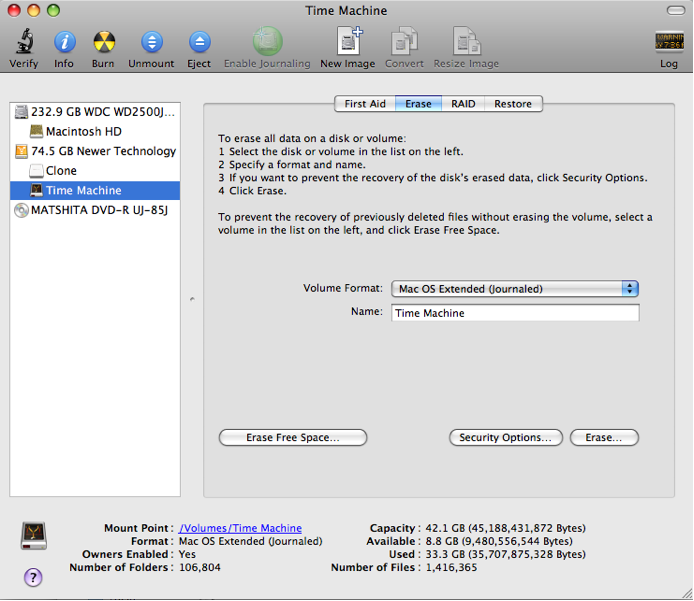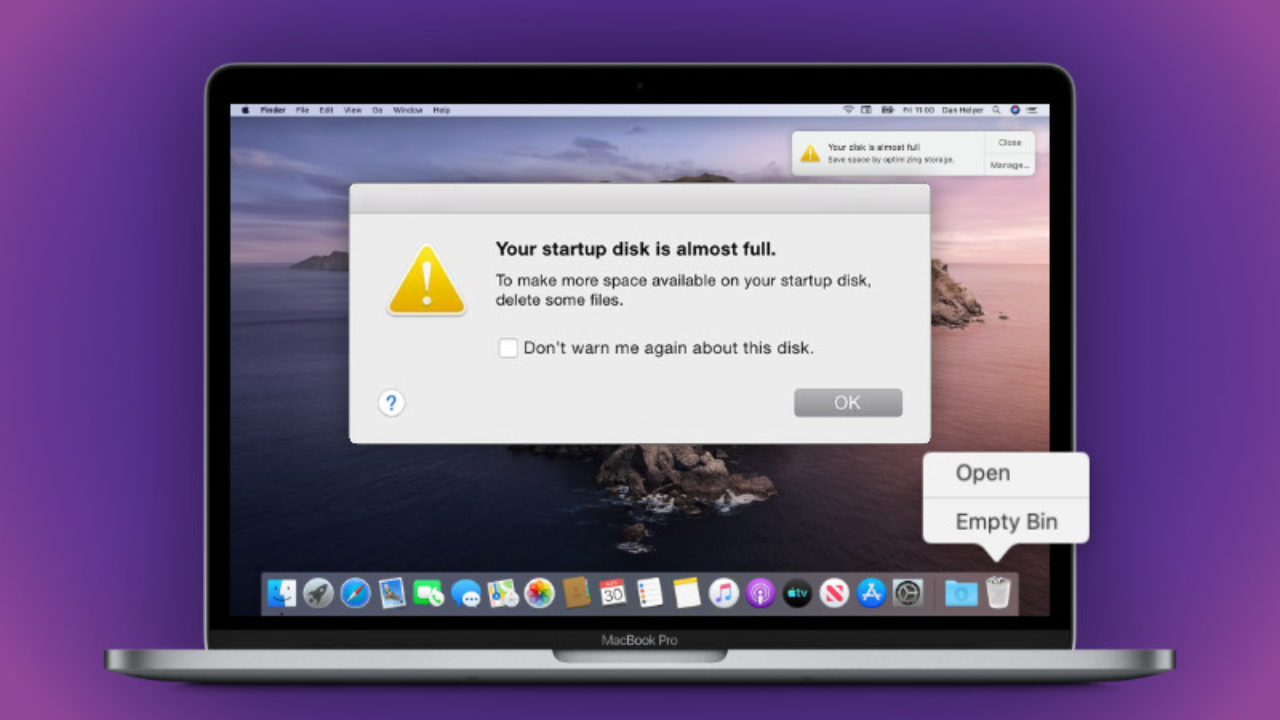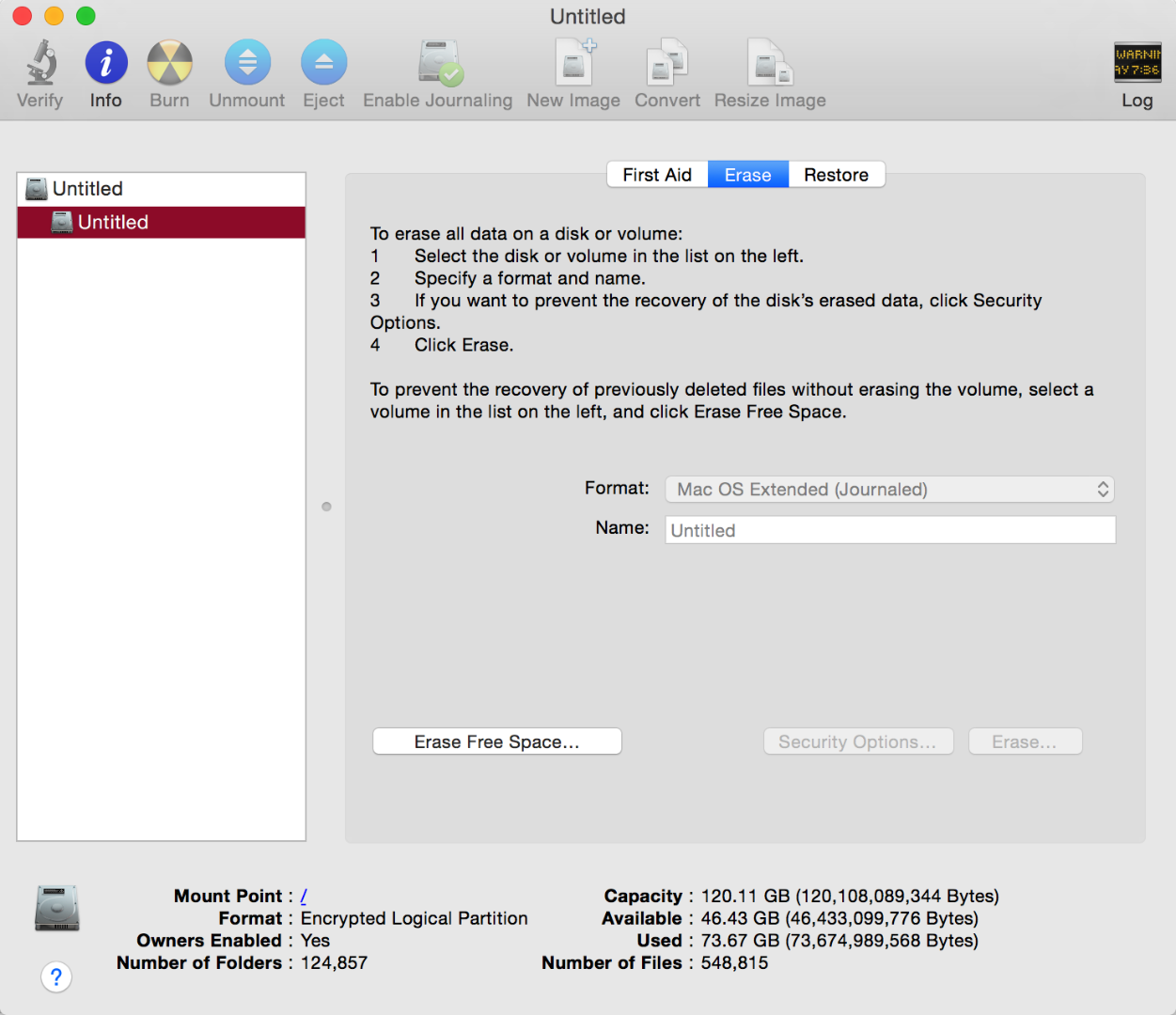- Macos Erase Free Space
- Mac Os X Erase Free Space Download
- How To Wipe Free Space
- Erase Free Space Windows
When you run it on your Mac, you will see three data erasure options: Erase Files, Erase Hard Drive, Erase Free Space. If you want to erase a hard drive in OS X 10.9 Mavericks, just choose the option – ' Erase Hard Drive '. Then select the hard drive and click on 'Erase' button. Once the erasing process gets finished, all the data on the. In Applications, sort your apps by size. Delete the largest ones. Restart your Mac to free up RAM. Get rid of system junk files with a free version of CleanMyMac X. This app gives you lots of possibilities to free up space, especially when it comes to system junk. CleanMyMac X has been notarized by Apple, which basically means it's safe to use. If you use a traditional hard drive with OS X 10.11, and are comfortable with the command line, you can use the Mac's srm command to overwrite the file. Fuller instructions (in English) are available here. Srm was removed in OS X 10.12, but it is still possible to install. In the latest versions of macOS, you can use rm -P to overwrite the file. Answer: A: I had the same problem as well. I went to system preferences and turned off FileVault under security and privacy. Then I restarted my mac in recovery mode, OS X: About OS X Recovery - Apple Support. Selected my mac drive and the partition tab and I was able to resize my main drive. Erase Free Space On Mac free download - StarCraft Demo for Mac (Classic OS), Free Internet Eraser, Avast Free Security, and many more programs.
| Click here to return to the 'Recover from an incomplete Erase Free Space process' hint |
You might want to stick with the 7-pass format next time... :p

/var/root/Library/Caches/TemporaryItems/
if erasing free space on the root volume, or in:
/Volumes/YourVolume/.TemporaryItems/folders.UIDNumber/TemporaryItems/
if erasing free space on another volume, where 'YourVolume' is the name of the volume being erased, and 'UIDNumber' is the UID number of the user performing the erase.
This is covered in an article on MacGeekery:
http://www.macgeekery.com/tips/quickie/recovering_from_a_failed_secure_erase_free_space
-systemsboy
Interesting discussion... I didn't know about Disk Utility creating a huge file. But I must be missing something... why not just reformat the disk (this time without zeroing) if you want to get rid of the file?
Reformatting the disk would require a reinstallation of everything, OS included.
Why reformat an entire drive just to simply erase a hidden Temp File_
That degrades your HD for no good reason_
Gubluntu was on the right track_
That's like 'oh - I installed a piece of software on my machine that i don't want anymore and instead of uninstalling it - why don't I simply reformat my hard drive' -- it makes no sense_
If you run out of gasoline in your car are you going to throw out the engine and get a new one after every tank of gas ?
Most any repair or diagnostic process will create a Temp File of some sort [which would be akin a B-Tree Directory only more complicated] so that what ever process is happening can keep track of what it's doing independently form the system that it's running on_
Norton Utilities and Systemworks did this back in the day - any Installer App does this_ Every time you download a file off the internet - it gets stored to a temporary file until the entirety of it's contents is downloaded_ Compression software does this [Stuffit Deluxe]_ SO if you goto download a file form the internet and losed your connection are you going to wipe your HD everytime and re-install your entire system ?
Read a couple of online searches - find the invisible offending file and trash it_
Wonderful Tip! I often do hasty things like that, and it's good to know there is an easy fix.

Macos Erase Free Space

Quicker:
Click the desktop.
Do Apple-Shift-n
press Enter or Reurn
Do Apple-Delete
You just created an untitled folder and deleted it.

Ah! We're only talking about Secure Empty Trash in the Finder!
I thought this whole discussion was about formatting a disk (with Disk Utility set to zero out the disk).
Mac Os X Erase Free Space Download
How To Wipe Free Space
No, we're talking about the 'Erase Free Space' function of the Disk Utility application, not the disk formatting function or the Finder's Secure Empty Trash command.
Erase Free Space Windows
I did the same thing and was left with no remaining memory on my hard drive. I tried your suggestions, but that did not work either. Any other hints?